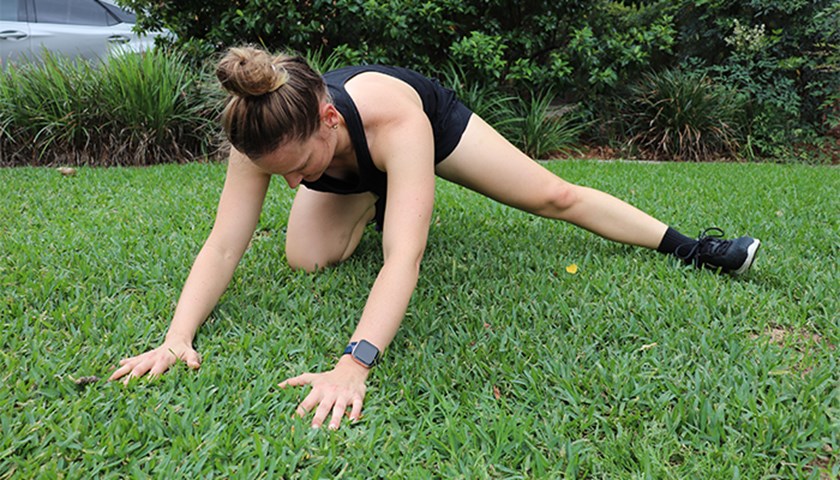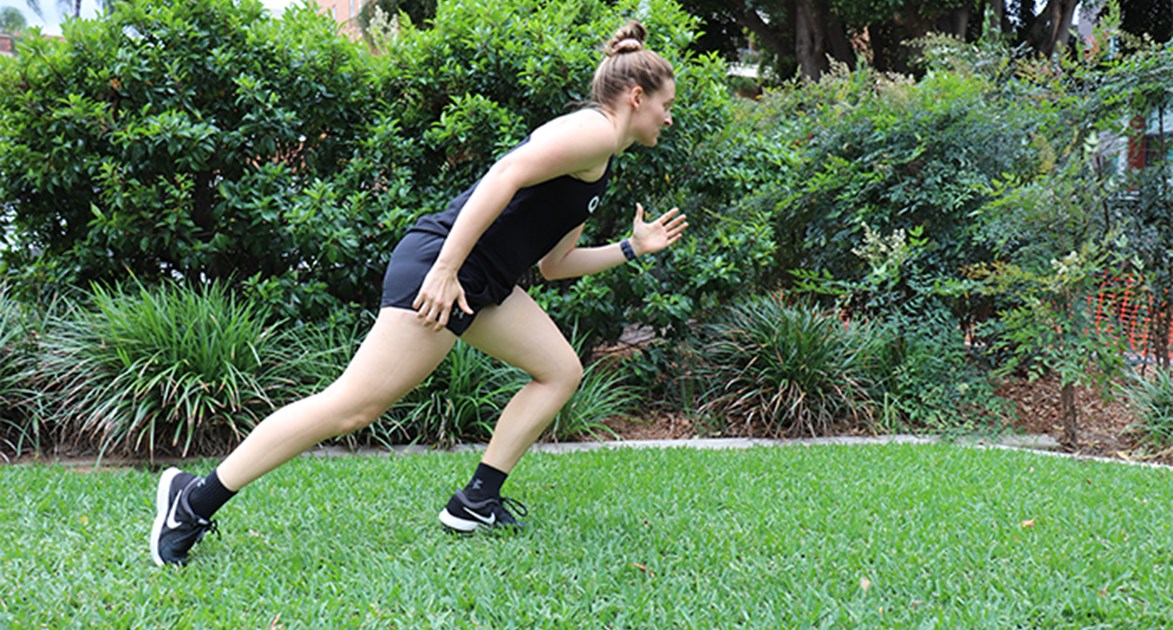

Warm-up before you get down to the game
If you’ve been around the grounds for a few years like some of our players have, you’ll know just how valuable a few simple stretches are to warm your body before the big game. Whether it’s lunges, star jumps, or a little jog on the spot, these exercises prepare your body’s muscles and tendons to respond to the demands of Touch Football. Think of it as a way to wake up your muscles gently before the first whistle sounds—like an alarm clock, no one likes a rude awakening.
Mater physiotherapist Ashleigh Leeson says that a good warm-up helps to reduce the risk of injury and can positively influence sporting performance.
“A 10-minute warm-up will prepare the muscles and tendons for sport whilst causing as little fatigue as possible,” said Ashleigh.
“Your work out should always include a few different exercises to get all of the different muscle groups ready and prime your body overall.”
While COVID-19 protocols may have restricted the time we can spend before and after a game at the field, you can still do your warm-up and warm-down exercises at home. Warming up your body before your game has some wonderful benefits, including:
- increasing your body temperature
- activating muscles to be involved in sporting activity
- dynamic movement and stretching to encourage flexibility
- neural priming—increasing the speed of the connection between the brain and muscles to be activated, and
- encouraging skill-specific preparation, like passing and catching, hand-eye coordination.
Preventing injury is essential in keeping players on the field. Warming up is always important, but what you do off the field is critical too. Your overall strength, fitness, sleep and nutrition are all important factors when it comes to preventing injuries. So don’t wait until you arrive at the field to get moving—make it a healthy habit at home too.
“Returning to play after long periods off requires a staged approach before setting a boot on the field”, said Ashleigh.
“Starting with gentle activity and gradually building up over several weeks is recommended, so think of activities like running, squats, lunges or gym workouts two to three times per week.
“Taking care of your body will go a long way to not only improving performance but reducing the risk of ending up on the sidelines,” she said.
Warm-up exercises
Set up two markers roughly 10 to 15 meters apart and complete a few laps of the marked area for each of the exercises below. This might look like one end of your backyard to another or moving between your letterbox and the front door a couple of times.
1. High knees—alternating your legs, do some light skipping with high knees. Try to get your knee higher than your hip, keeping your chest up and looking forwards. Do two laps of the marked area.
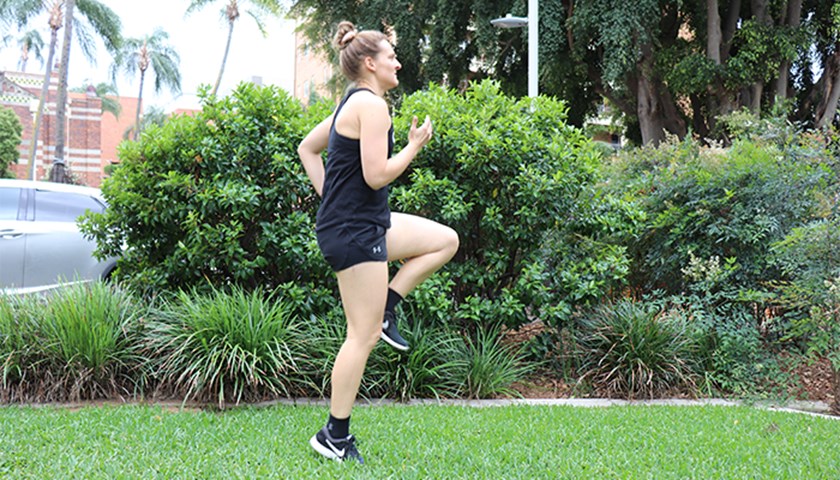
2. Grapevine—stand sideways with your shoulders pointing forward. Lift your leg high and across the front of your body. Repeat and move along between the markers with each repetition. Do two laps of the marked area.
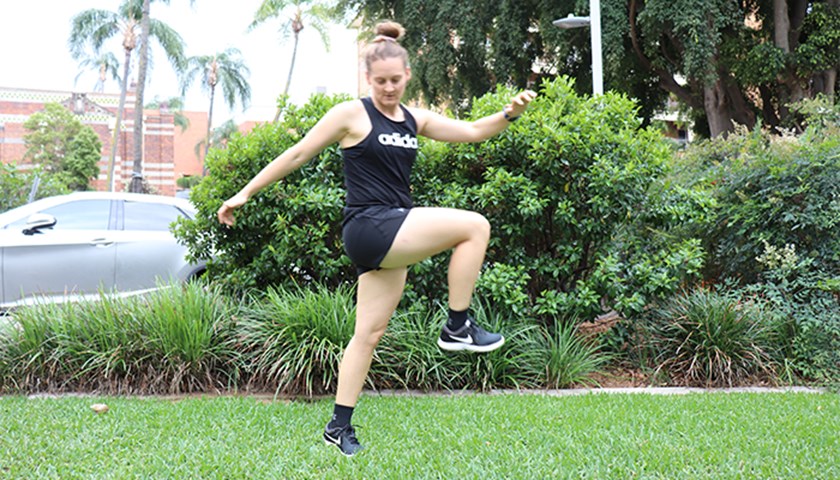
3. Toe touches for hamstrings—walk forwards and place one leg out in front of you with a straight knee. Bend down as if trying to touch your toes, keep you back flat and bend at your hip. Alternate from side to side as you move along between the markers.
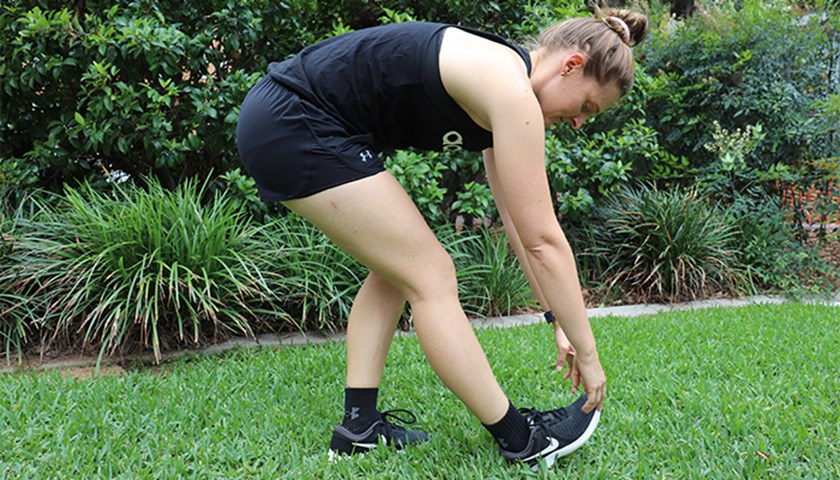
4. Alternating lunges—step forwards into a lunge and at the end of the movement, hold this position and rotate your trunk keeping your balance. Keep your chest high, back leg under your trunk and front knee behind your second toe. Step through into a lunge on the other side. Repeat as you move along between the markers.
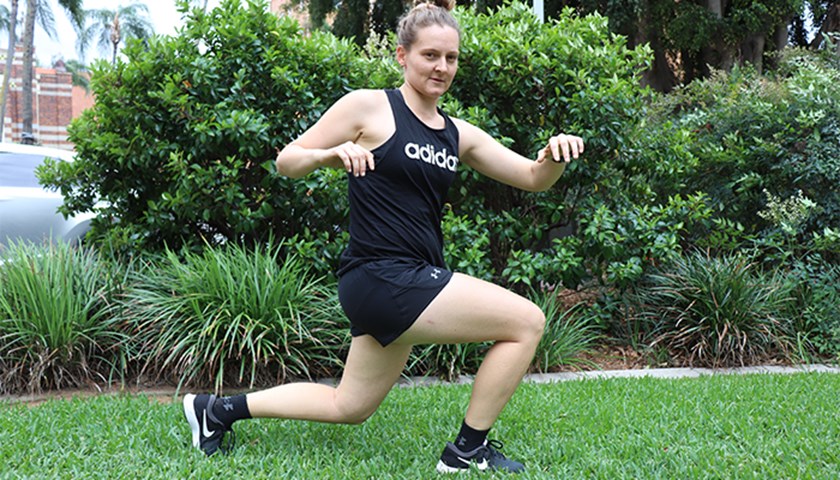
5. Single lead deadlift—stand on one leg, reaching forwards bending at your hip to touch the ground. As you reach, allow your other leg to rise behind you. Aim to keep your hips level and your back leg in line with your trunk. Lower leg and step through to repeat on the other side. Alternate as you move along between the markers.
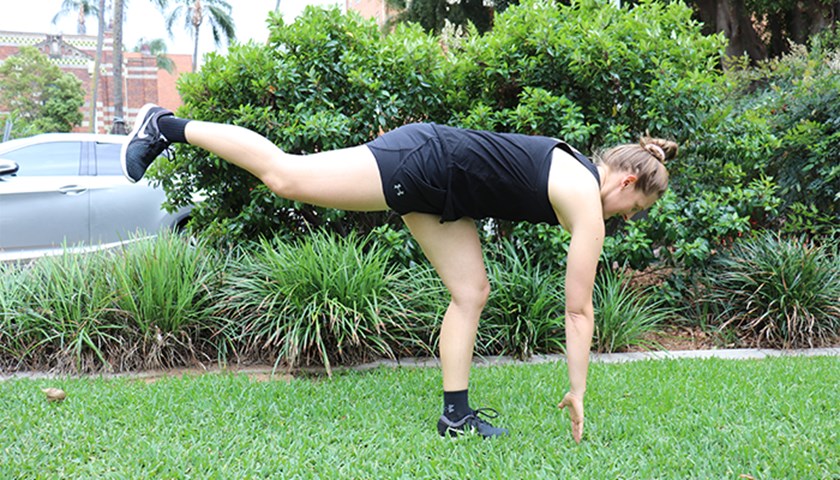
6. Sumo squat—step sideways into a squat, keeping your knees outside your second toe and slide back into the squat. Keep your chest high and back flat. Stand up and turn to your side (180 degrees) and repeat the squat in the other direction. Continue this as you move along between the markers.
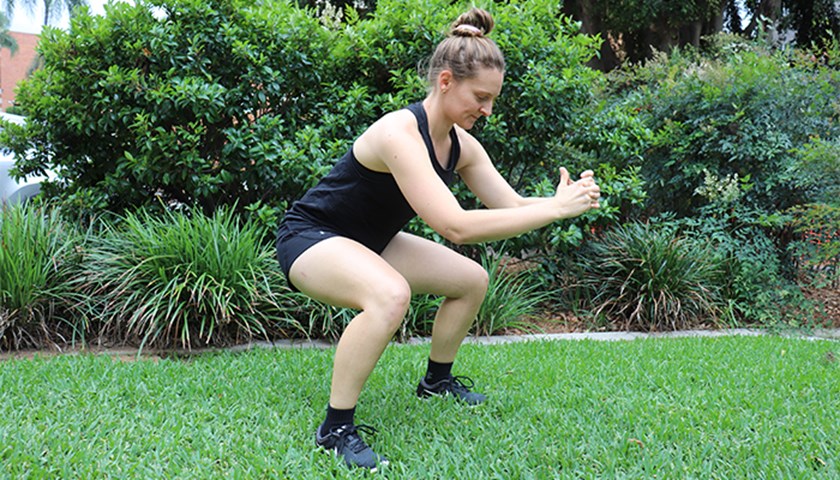
7. Jumps with feet shoulder-width apart—jump forward and stick the landing, aim to land with your knee over your shoelaces and sit your hips back. Repeat this for four jumps in a row, then jog through to the marker.
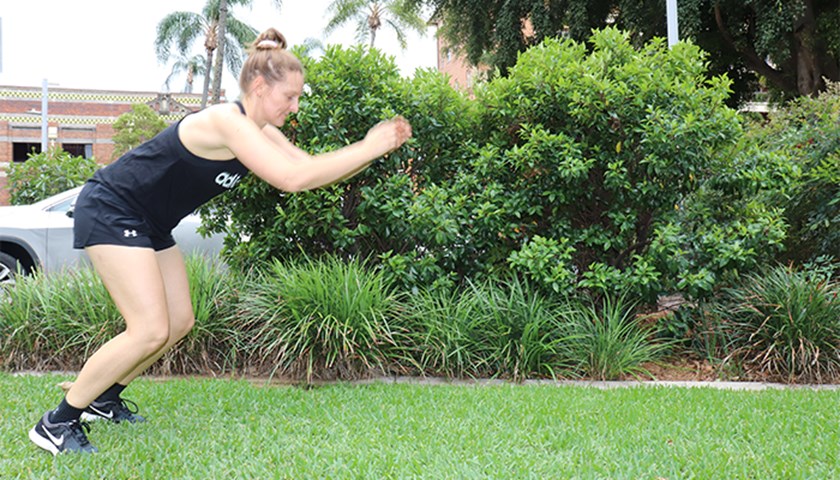
8. Toe bounces—bounce on toes for six repetitions with your knees straight. Push your toes hard into the ground and aim to jump back up as quickly as possible. Once you’ve completed your six jumps, jog through to the marker.
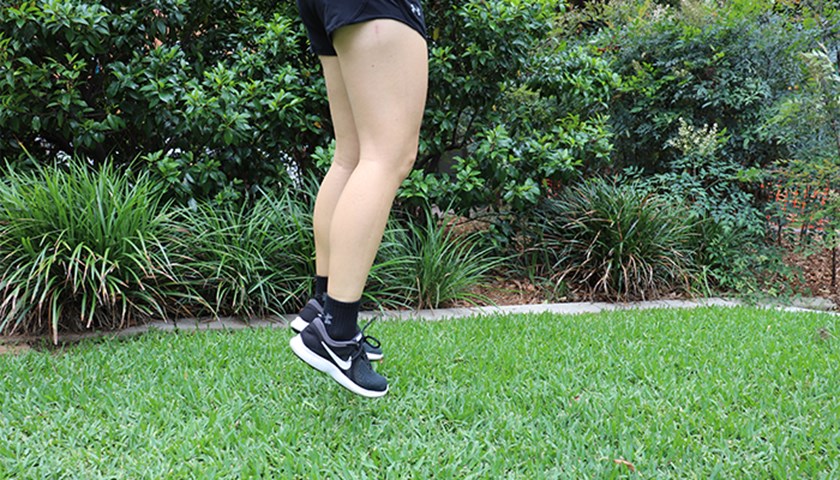
9. Skip for height—aim to jump as high as you can off one foot whilst driving up with your opposite knee. Alternate skips down to the marker.
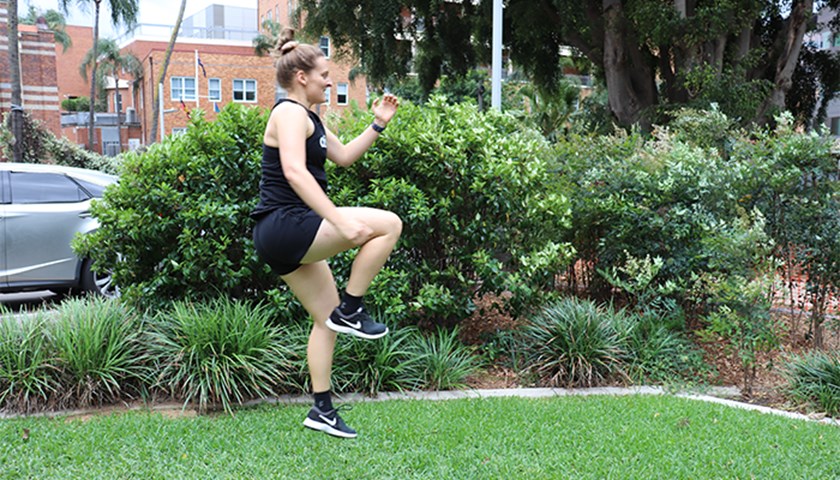
10. Jog 50 per cent of your maximum pace from one marker to the other
- Quick feet—jog quickly on the spot for five seconds, then run at 75 per cent of your maximum pace to the end maker. Walk back to the starting maker. Repeat the exercise but then run at 85 per cent of your maximum pace to the end marker. Walk back to start.
- Jumping—jump three times in a row and then immediately sprint hard at 100 per cent of your maximum pace to the end marker.
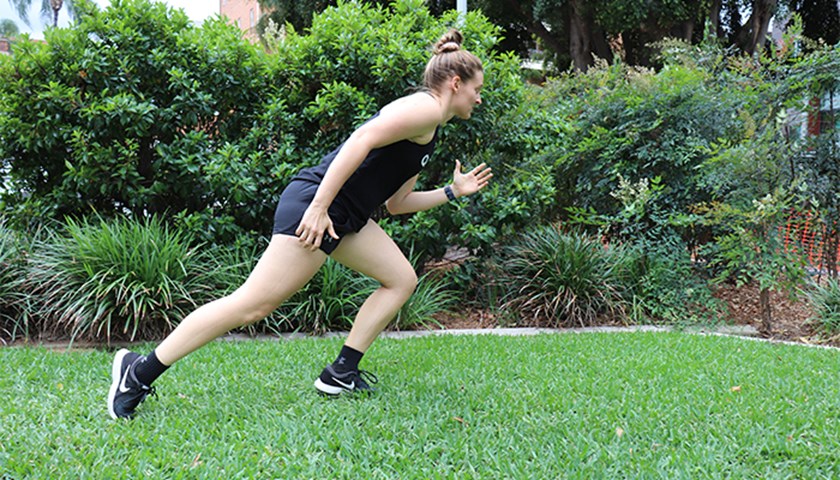
Warm-down exercises
Did you know that a post-game warm-down is just as important? Taking five minutes (or longer if needed) after the game to stretch out your hamstrings and loosen those shoulders will help your body to recover from the forces experienced during competition. Aim to reduce your heart rate and muscle stiffness with slowly walking it out for a few minutes, then move into some simple static stretches. You might be able to walk it out between the field and the car, then do your simple stretches at home after the game.
While you’re holding your stretches, focus on breathing in deeply and slowly out, being mindful of how your body is feeling. Hold the stretches for 20 to 30 seconds each, before moving onto the next muscle. Try to target all your muscle groups and don’t forget to do both sides.
1. Walk around slowly for one to two minutes.
2. Calf stretch—keep your back leg straight and push your heel down towards the ground as far as possible.
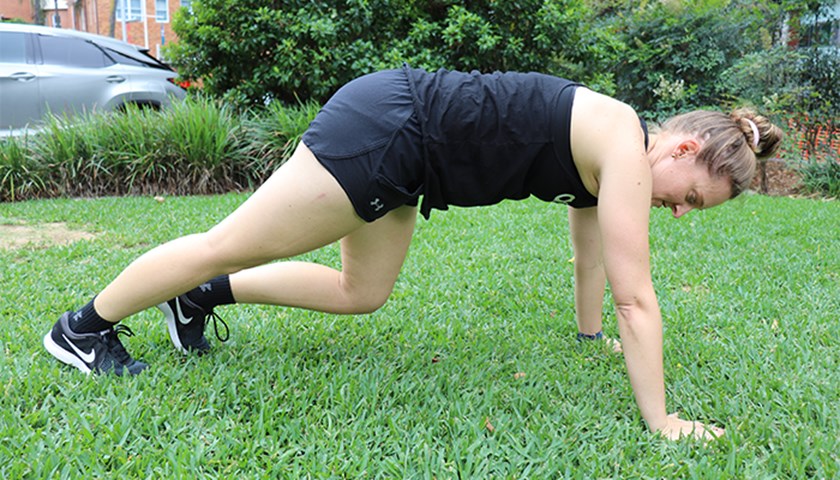
3. Hamstring stretch—lean forward at the hips, keep your back straight, and bend slightly at the knee if you can’t quite reach your toes.
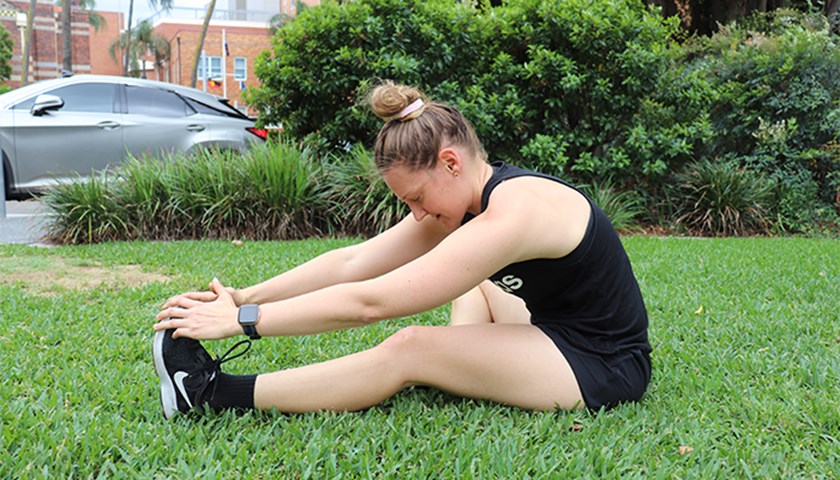
4. Quadriceps and hip flexor stretch—keep your chest up, lean forward at the hip and lunge on to your front leg.
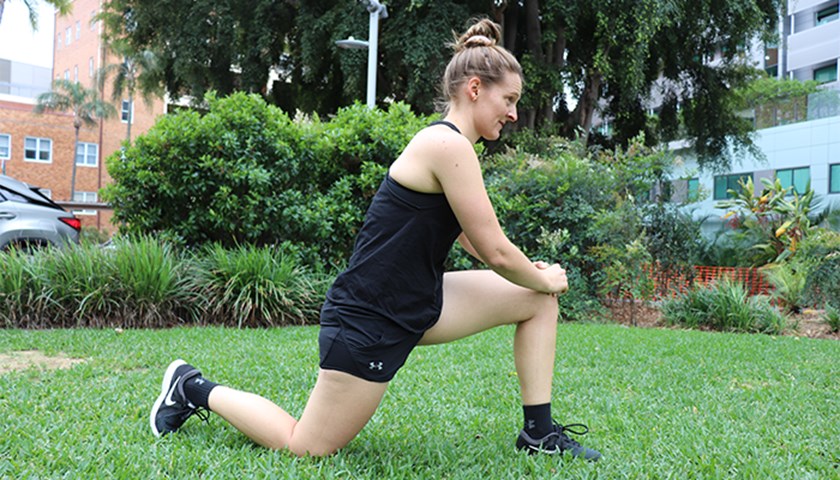
5. Gluteal stretch—aim to cross your ankle over the opposite knee, then hug your knee as close to your chest as possible to stretch.
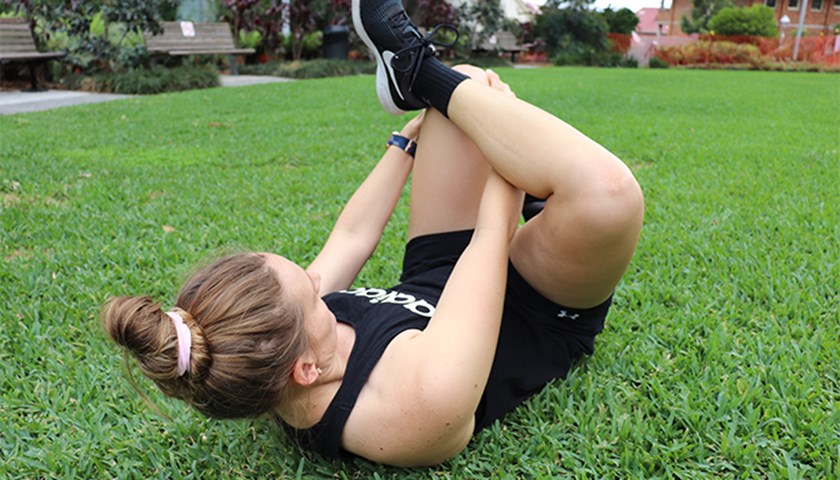
6. Adductor stretch—keep your knee straight on the side you are stretching. On the opposite side, kneel and then sit back into the stretch and aim to get your bottom toward your heel.
